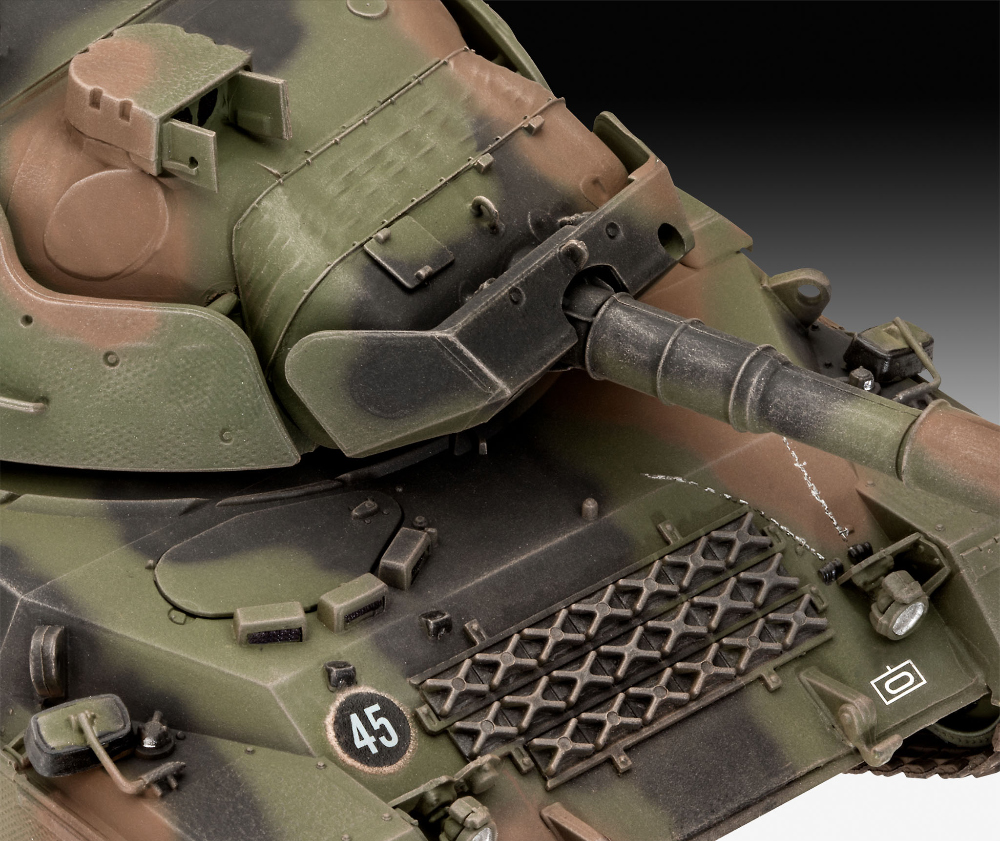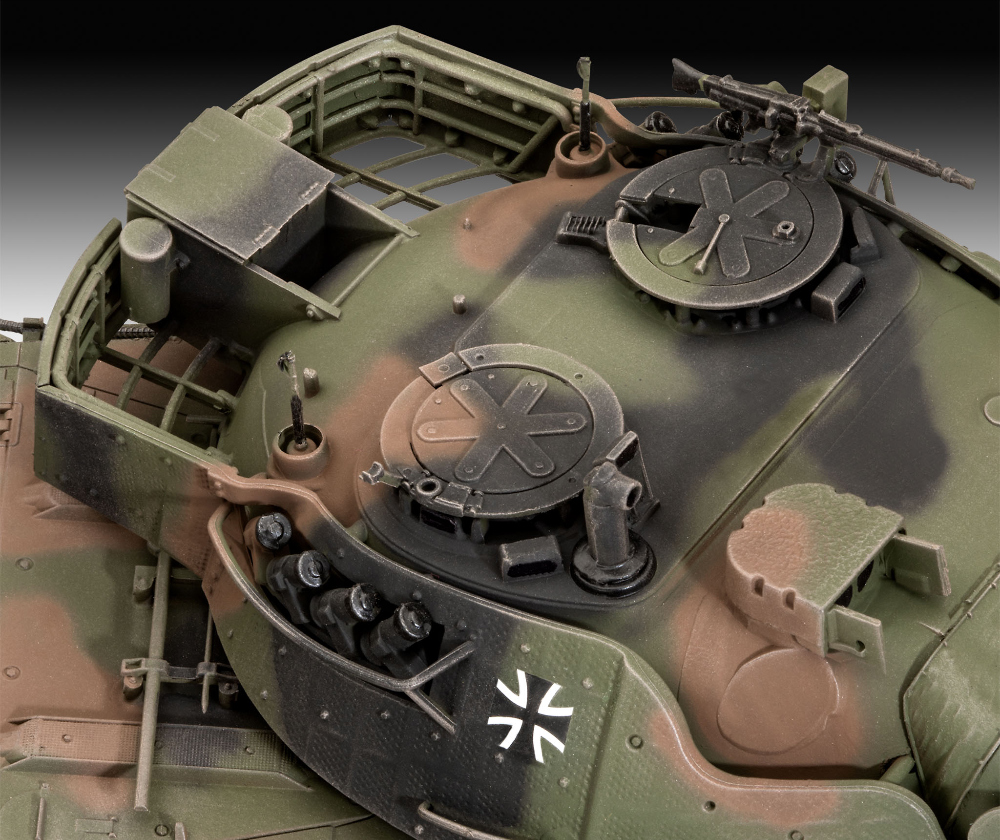




The Leopard project started back in the mid 1950s with the goal of producing a modern tank to replace the M47 and M48 tanks which where then in use by the recently reconstituted Bundesehr (German Army). The specification called for a tank weighing no more than 30 tonnes capable of surviving 20mm rapid fire cannon and having a power-to-weight ratio of 30hp per tonne. The tank had to be capable of surviving on a nuclear/chemical contaminated battlefield. Armament was to be the then standard NATO 105mm gun. For this design Mobility was the primary concern with firepower secondary, and armour being seen as low down the list as it was envisaged there was little possibility of standing up to modern hollow charge weapons.
Three design teams competed for the Tank contract from Porsche, Rheinmetall and Borgward. The Porsche prototype was eventually selected as the winner. Production was set up with Krauss-Maffei in Munich and deliveries began in late 1965. In the 1980s research was done into upgrading the tank. The turrets were upgraded to store more ammunition, a new, and a new fire control system was fitted. Provision was made for bolt on Lexan armour, and the 120mm gun of the Leopard 2 (though this was never fitted) As well as the German Army the Leopard 1 would go on to serve with the Armies of Belgium, Holland, Norway, Italy, Denmark, Australia, Canada, and Turkey. The A5 with Germany, Holland and Chilie.






